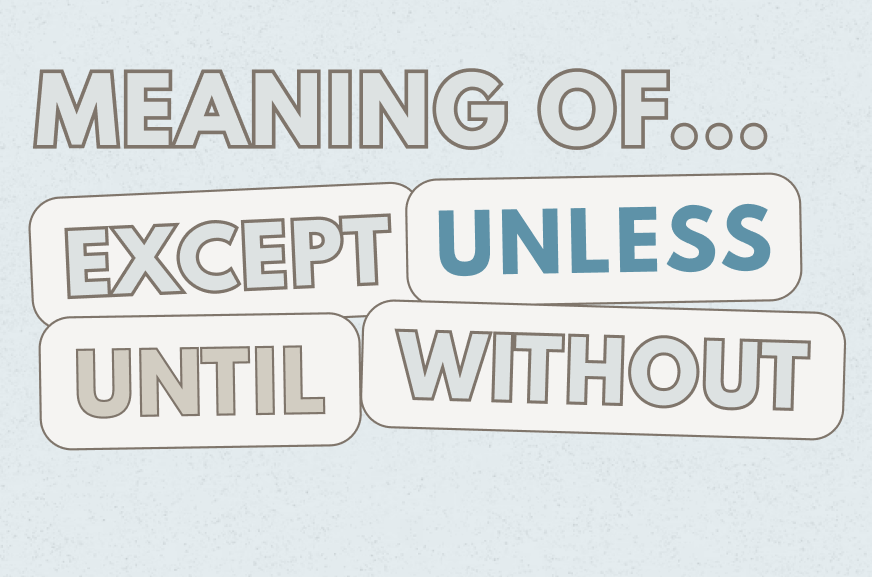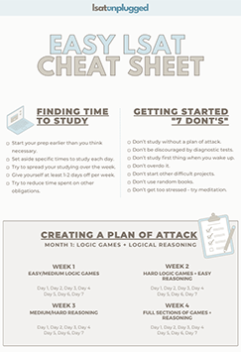I’ve talked about Sufficient and Necessary Condition indicator words before.
However, I left out a couple of important words (except, unless, until, and without) that factor into conditional reasoning.
These special words don’t *quite* fit the mold that the others do, so I decided to give them their own article.
The words “except,” “unless,” “until,” and “without” frequently appear in the Logical Reasoning section of the LSAT. Their presence often trips up test-takers who have difficulty deciding whether to associate them with the sufficient condition or the necessary condition. The truth is that these words don’t neatly fall within either category. The condition with which you associate them should depend upon your approach to translating them.
This article will cover two common methods that test-takers can use to correctly translate statements containing these words.
Note: I’m not a fan of Method #1, so just skip to Method #2 if you’re not interested in the nitty-gritty.
Method #1: Replace these words with the phrase “If not.” This means that you’re taking these words to represent the negation of the sufficient condition.
In other words, you’re negating whatever immediately follows the words “except,” “unless,” “until,” and “without” and turning that thing, when negated, into the sufficient condition.
The phrase “Not B unless A” would become “Not B if not A.” Rearranged in the traditional “If-then” form (sufficient —> necessary), this would be “If not A, not B.”
Diagrammed: Not A —> Not B
Contrapositive: B —> A
Example of Method #1 with words replacing variables:
It’s not Thanksgiving (B) unless there’s turkey (A). (I know it’s not Thanksgiving for a few weeks, but I’m hungry for turkey and stuffing now.)
With “if not” replacing “unless”:
It’s not Thanksgiving if there’s no turkey.

Diagrammed: No turkey —> Not Thanksgiving.
Contrapositive: Thanksgiving —> turkey.
I’m not a huge fan of this method. Although it seems to be an incredibly simple technique for dealing with these annoying words, it often requires additional steps that Method #2 (below) doesn’t.
Remember how we rearranged the order from “Not B if not A” to “If Not A, then Not B” so that the sufficient condition would be in front? Then, we had to take the contrapositive because dealing with a conditional statement involving two negative statements.
Without taking the contrapositive, this method turns “No X unless Y” into “Not Y —> Not X.” We then have to take the contrapositive to create “X —> Y.”
Method #2: Take any of the annoying words (“except,” “unless,” “until,” and “without”) as introducing the necessary condition. In other words, whatever immediately follows one of these words is your necessary condition.
Then, whatever other clause is present in the conditional statement will, when negated, become your sufficient condition.
The phrase “Not B unless A” would first become “Not B then A.” However, we’re not done yet – we still have to negate “Not B” to become “B.”
So we have B —> A. No need to take the contrapositive or rearrange anything.
Example of Method #2 with words replacing variables:
“It’s not Thanksgiving (B) unless there’s turkey (A).” would first become:
“Not Thanksgiving —> there’s turkey” BUT
we still have to negate “Not Thanksgiving” to become “Thanksgiving.”
This gives us “Thanksgiving —> turkey.”
(Meaning that we’ve directly turned “No X unless Y” into “X —> Y”)
Note: Of course, the sentences containing these words don’t always follow the “negative variable – annoying word – positive variable” (No X unless Y) format (or the identical “unless Y, no X” format), so Method #2 isn’t always incredibly superior to Method #1. However, I find that Method #2 more frequently gives you a positive and useful conditional statement than Method #1 does.
Keeping the variables positive is especially important when forming long conditional chains. See PrepTest 30 (December 1999), Section 2, Question 18 (page 59 in Next 10) for an example.

